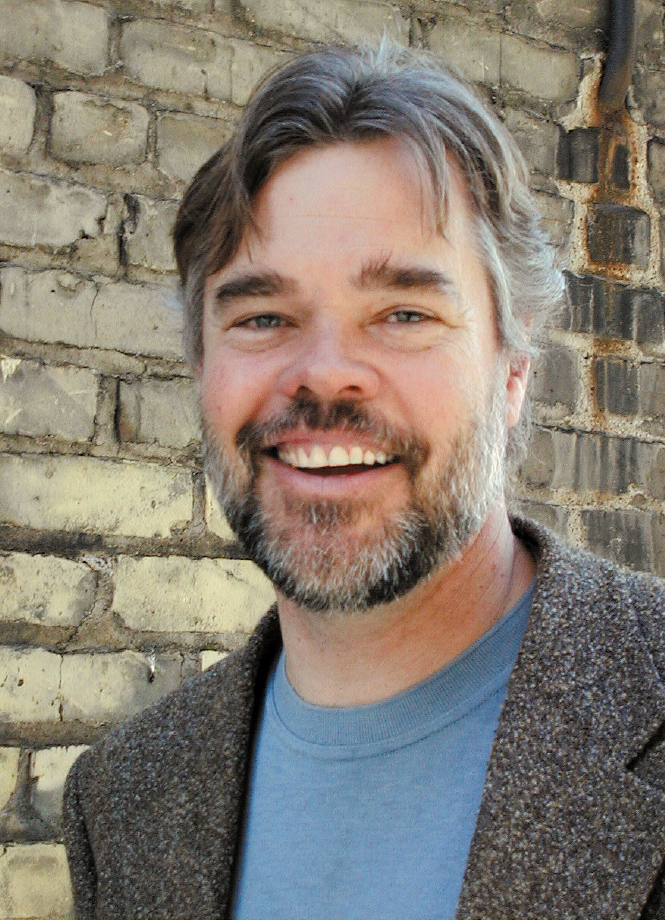AARP Hearing Center


EDITOR’S NOTE (March 2021): Livability writer and world traveler Jay Walljasper began writing for AARP Livable Communities in 2014. While sheltering in place due to the coronavirus pandemic last summer, Jay wrote an essay about finding joy, comfort and wonder within the norms of daily life in his Minneapolis neighborhood and home. The article, called "Treasure Hunt," was published in October 2020 by Notre Dame Magazine. By that time, Jay had been diagnosed with a terminal illness, having suddenly begun to feel unwell. We are publishing an abridged version of the essay in honor of Jay and his lifelong commitment to elevating the importance of communities being livable and age-friendly for all people, of all ages.
I paid little attention when the phrase “bucket list” drifted into everyone’s vocabulary, thanks to a 2007 movie of that name starring Jack Nicholson and Morgan Freeman.
But as the years pass, things change — children leave home, businesses falter, new aches erupt as a reminder we can’t keep going at the same pace forever. I eventually recognized that everyone — yes, even me — comes into this world with an expiration date.
My first, albeit unconscious, acknowledgment of mortality was the day I spotted a copy of 1,000 Places to See Before You Die on the discount table outside a used bookshop. Why not? It was only two bucks. This 2003 bestseller, which sparked the bucket list phenomenon, profoundly deflated me. I mean, so many places to see and so little time — and not much money to make it happen.
But I shelled out full price for 1,000 Places to See Before You Die in the USA and Canada, hoping to settle for more realistic yearnings, but once again I felt daunted. If only I could negotiate an extra 75 years of life — and win the lottery jackpot a few times.
Dreams or Discontent?
I understand why writing down your deepest wishes can be valuable — to inspire and motivate us to do what we really want with our fleetingly finite lives. But viewed another way, bucket lists reinforce a major source of unhappiness in modern society: our pervasive sense of scarcity, the belief that what we really want — need actually — is far out of reach and is something quite apart from what we’re doing right now.
America's civic religion — preached in popular culture for 200 years — promises we can have anything we want in life if we are willing to devise a plan and then work as hard as humanly possible to make it a reality. Evidence all around us proves this is not true.
Yet the myth persists because humans are ingrained optimists and, frankly, it’s almost impossible not to fantasize about what you want most out of life — especially if, like me, you are approaching the age at which one of your parents died. That’s why I didn’t chuck the idea of a bucket list, but decided to create two versions:
- The “Aim-For-The-Stars” Bucket List features the experiences I hanker for if time and money were no factor: Cycling along the Danube River from Vienna to Budapest. Navigating the winding lanes of historic Cartagena, Colombia; Fez, Morocco; and Penang, Malaysia. Taking a dip in Bali’s hot springs. And on and on and on. . . .
- The “Pragmatic Bucket List” includes exploring places sacred to Native Americans, starting with Lake of the Woods in my own state. Riding Amtrak through the Rocky Mountains. Hiking the topographically unique Loess Hills in Iowa. Eating scones at high tea in the Panola Valley Gardens just outside St. Paul. And on and on and on. . . .
"I mused often about pleasures right under my nose that merit more attention. I’ve come to call these my 'Luvet List' (love-it), which I am convinced offers a better return on investment than any bucket list."
Compiling these lists — which justified a lifetime spent reading travel magazines — was a lot of fun, and whooped me up to find ways of scrounging enough cash and vacation time to make at least some of them happen. Yet it felt like I was funneling all my energy into a narrow slice of life that even under the most favorable projections would account for only a small portion of the years I have left. Was I sacrificing everyday delights simply to check more boxes on an endless itinerary of exploration? Do all the weeks and months when I am not on the road amount to nothing?
I had no easy answers to those questions. Being out in the world is fundamental to who I am. More than most people, I love hearing friends’ accounts of recent vacations and jot mental notes of places I might want to check out. Travel for me is like eating caramel corn — the more I get, the more I crave. But a person can’t endlessly gallop the globe — unless you’ve got a trust fund or work for an airline.
Even then, is that how I want to live? What about family? Friends? A place in the world where I belong, not just somewhere I’m passing through?
The answer is obvious, of course. But answering a question is not the same as accepting it.
One morning last winter, I took a walk through my neighborhood as snow piled up in the yards. I felt a surge of energy as plump flakes tumbled down like a Christmas Eve scene in an old movie. In fact, at that moment there was nowhere else I would rather have been. This place — where not so long before I had reveled at the fiery colors of maple trees and the brilliantly pink crabapple blossoms against a bright sky — was the center of the universe.





























































